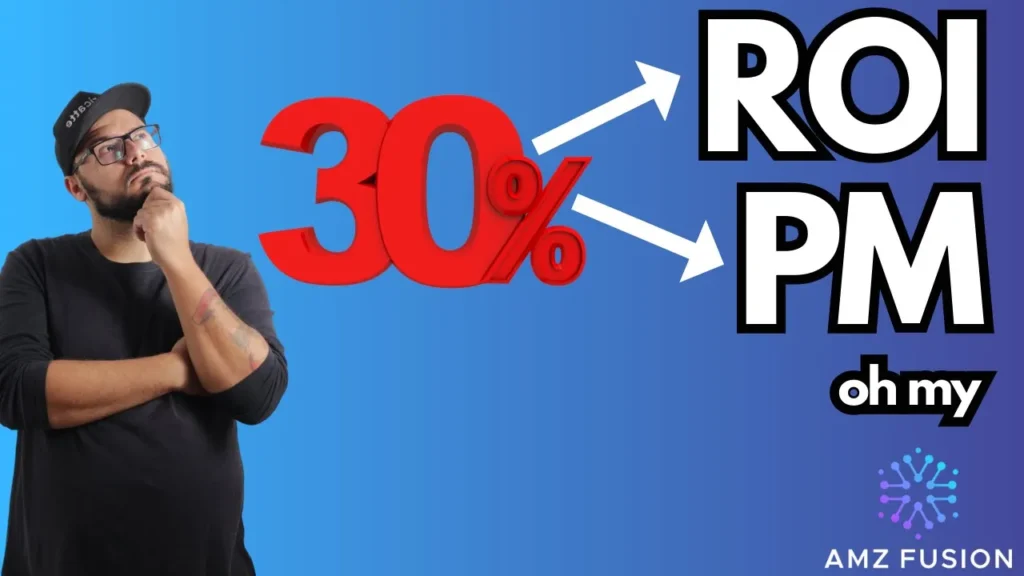Welcome back to AMZ Fusion! It’s Tim here, and today we’re diving into the crucial concepts of ROI (Return on Investment) and Profit Margin (PM) in the context of Amazon selling. These metrics are essential for assessing the financial health of your business, but they often lead to differing opinions on their use and significance. Let’s break down what each means, when to use them, and how they can impact your business decisions. ROI vs PM…lets find out. If you are looking to quickly make an analysis on the Amazon page, check out our Chrome Extension to make your life easier!
What is ROI?
ROI measures the percentage return on the money you invest into your business. It’s calculated by dividing the profit by the cost of investment. For instance, if you invest $10 and earn a profit of $2, your ROI would be 20%. This metric is vital for understanding how effectively your investment turns into profit.
What is Profit Margin?
Profit Margin, on the other hand, relates your profit to the sales price. It’s calculated by dividing the profit by the sales price. For example, if you sell a product for $100 and make a $20 profit, your profit margin is 20%. This percentage reflects how much of each dollar in sales is actual profit.
ROI vs. Profit Margin: Usage and Benefits
The choice between ROI and profit margin often depends on the specific needs of your business:
- ROI is particularly useful for making purchasing decisions. It tells you directly how much profit you can expect relative to what you’ve spent. This metric is independent of sales volume, making it a powerful tool for evaluating individual investments or product lines.
- Profit Margin is often favored for its simplicity, especially in larger businesses where quick, broad assessments are necessary. It provides a straightforward view of profitability relative to sales, helping you understand overall business performance. For example, knowing that you maintain a consistent 20% profit margin might indicate healthy operations if aligned with your business model.
Practical Application in E-commerce
In e-commerce, where sales dynamics can be complex due to varying costs and prices, both metrics have their place:
- When purchasing inventory, ROI can guide decisions by showing the potential return on each dollar spent. This is crucial when assessing whether a product fits within your financial goals.
- For overall financial tracking, profit margin offers a clear view of profitability trends and helps gauge the efficiency of sales and marketing efforts.
Example in Action
Consider you’re evaluating two products:
- Product A costs $10 and sells for $12, making a $2 profit. The ROI here would be 20%, but if the sales price significantly increases while the cost remains stable, the profit margin could be misleadingly high compared to the actual money made per dollar invested.
- Product B costs $5 and sells for $15, making a $10 profit. The ROI would be 200%, a much more attractive figure for an investor despite a similar profit margin to Product A if calculated on a higher sales volume.
ROI vs PM Wrap Up
Both ROI and profit margin are crucial but serve different purposes. ROI is excellent for assessing specific investment returns and deciding which products to stock, especially in scenarios where capital allocation directly influences profit potential. Profit margin, however, is beneficial for quick evaluations of overall business health and operational efficiency.
Remember, the right tool depends on the question you’re trying to answer. Are you looking at the effectiveness of specific investments (ROI) or overall business profitability (profit margin)? Understanding the nuances of each will help you make more informed decisions, ultimately leading to better financial management of your Amazon business.
For more insights and tools to manage your Amazon business effectively, check out our resources at AMZ Fusion. Whether you’re fine-tuning your investment strategies or aiming to better understand your financial standing, staying informed is your pathway to success.




